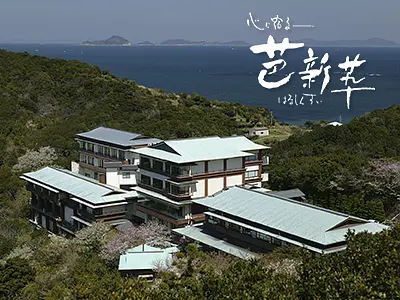斎宮・斎王とは?博物館・体験施設・史跡を巡ってご紹介!
掲載日:2023.02.11
天皇に代わり伊勢神宮に代々つかえた「斎王(さいおう)」についてご存じでしょうか?斎王の宮殿「斎宮(さいくう)」があった明和町にて、史跡や博物館・体験施設などを巡り、斎王が生きた時代の歴史や文化を楽しく学んでみましょう!

1.斎王・斎宮とは?
斎王(さいおう)とは

天皇に代わり伊勢神宮に仕えた皇族女性
斎王とは、天皇に代わって伊勢神宮に仕えた未婚の皇族女性のこと。
斎王の制度が確立したのは7世紀の後半(飛鳥時代)で、13世紀のはじめ(南北朝時代)までの約660年にわたり60人以上の皇族女性が斎王を務めたといわれています。
歴代の斎王たちは天皇が即位するごとに、未婚の内親王(または女王)の中から「卜定(ぼくじょう)」という古来の占いによって選ばれ、都から斎宮に派遣されました。
内親王(ないしんのう)・女王(じょおう)とは:
古代では、内親王は天皇の娘、女王は天皇の娘以外の皇族女性のこと。
斎王の務め
斎王の最も重要な役割は、伊勢神宮にて年3回行われる大きな祭(9月の神嘗祭(かんなめさい)、6月・12月の月次祭(つきなみさい))に参加することでした。 あわせて、日ごろから様々な儀式や行事を行い、斎王としての務めを果たしていました。
斎宮(さいくう)とは

斎宮は、斎王の宮殿や、斎王をお世話するための役所である斎宮寮があった所のこと。
斎宮の遺跡は古代の多気(竹)郡、現在の明和町に位置しています。伊勢神宮からおよそ15キロメートル離れた伊勢神宮の神郡(神三郡)の入口にあたる場所ではあるのですが、なぜこの地に斎宮がおかれたのかは歴史資料に記されておらず、いまだ解明されていません。
「竹の都」!斎宮
斎宮の遺跡(国の史跡斎宮跡)の総面積は約137ヘクタール。甲子園球場にすると、なんと35個分!
広大な土地の中に100棟以上の建物が建ち並び、520人ほどの人々が斎宮に勤めていました。
当時の地方都市としては、「遠の朝廷(とおのみかど)」と呼ばれた大宰府(都から遠い九州を統治し、大陸に対する外交の窓口の役目がある)に劣らない重要な場所で、「竹の都(たけのみやこ)」ともいわれていました。
2.「斎宮歴史博物館」で斎王・斎宮について学ぶ!
斎宮歴史博物館とは

斎宮歴史博物館は、斎王や斎宮に関する歴史・文化について学べる博物館です。
館内には、斎宮跡から出土した土器や陶磁器、斎宮について記された文献、斎宮に関する映像や再現模型など様々な展示品があり、斎宮について分かりやすく&楽しく学べるのが魅力です!
出土品から、斎宮について学ぶ!
「斎宮跡」の発見に繋がった重要なすずり

写真の出土品は、斎宮の役人たちが物書きをする際に使用した硯(すずり)。
「蹄脚硯(ていきゃくけん)」といって、硯の台座が馬のひづめに似た形状をしています。
手前にある破片が発掘で出土した実物、その奥にあるのがレプリカ(復元品)です。
精巧に復元されているので、硯の全体像がよく分かりますね。
この硯は、斎宮の歴史調査にとって大変重要な出土品なのだそう。
と、いうのも...
蹄脚硯がきっかけとなり幻の宮・斎宮の所在地が明らかに!
斎宮については、歴史資料や様々な言い伝えが残されているものの、具体的な所在地が明らかでないことから「幻の宮」と呼ばれていました。
そんな中、1970(昭和45)年の古里地区(斎宮跡の北西部、斎宮歴史博物館の南方にあるふるさと広場一帯)で行われた発掘調査の際に、蹄脚硯が出土しました。
平城京跡や大宰府などでしか見つかっていない蹄脚硯が発掘されたことから、幻の宮・斎宮の所在地が確たるものとなったのです。
その後、斎宮跡は1979(昭和54)年に国の史跡に指定され、現在も発掘調査は続いています。
また、2015(平成27)年には、斎宮跡と出土品、関連の旧跡で構成される「祈る皇女斎王のみやこ 斎宮」として、文化庁の「日本遺産」にも認定されました。
斎宮の文化が分かる!出土品の数々

斎宮歴史博物館では斎宮跡から出土した土器や陶磁器をはじめ、数多くの品々を間近に見ることが出来ます。
写真上のものは、「緑釉陶器(りょくゆうとうき)」という平安時代の高級な陶器。
緑のうわぐすりが使われており、美しい色彩や光沢が特徴です。
斎宮跡からは、これまでに緑釉陶器が7000点以上出土しているそう。
緑釉陶器が数多く出土したことから、斎宮がいかに平安文化の栄えた場所であったかがよく分かりますね。
展示模型から、斎宮について学ぶ!
1/400斎宮寮復元模型

斎宮歴史博物館では、斎宮に関わる様々な模型が展示されています。
中には1/400スケールで平安時代の斎宮の全体を表した模型も!
斎宮全体を見下ろすようにして観察できるため、かつての斎宮の様子がよく分かります。
まるで京都!碁盤目状に広がる都市
奈良時代の終わりから平安時代の前期まで天皇を務めた桓武(かんむ)天皇の時代、斎宮に碁盤目状に区切られた広大な都市的な区画(「方格街区(ほうかくがいく)」と呼ばれるもの)がつくられます。
当時の首都であった京都でも、「条坊制(じょうぼうせい)」という制度により、まちが碁盤目状に整備されました。
斎宮はまるで都のような景観であったと考えられています。
斎王の日常

写真は、博物館内にある斎王の居室の模型です。
手前が命婦(みょうぶ ※斎王の秘書のような役割の人)、奥の畳上が斎王で、2人が語らっている様子が模型で表されています。
文献によると、斎王は伊勢神宮に祈りを捧げる日々を過ごしながら、歌を詠んだり、琴などの楽器を演奏したりするなど、都と変わりのない生活をしていたようです。
ただ、貴族らしい華やかな生活を送りつつも、仏教やケガレに関する言葉を口にしてはいけないという、伊勢神宮に仕える斎王らしい決まりごともありました。
斎王の食事

写真は、斎王の食事を再現した模型です。
なお、斎王の食事のレシピを記した記録は残っていないため、当時、諸国から斎宮に納められた食材のリストに、斎宮の近くでとれたであろう海の幸を加えて作成されたものです。
斎宮に運ばれてきた様々な食材

斎宮には、諸国からの税として、米・大麦・小麦・粟(あわ)・大豆・小豆などの穀物や、塩・酢・醤(ひしお)などの調味料、アワビ・カツオ・サケ・アユ・フナ・タイなどの魚貝類、鳥肉、海藻類、栗・蓮の実・干柿などの果実類が運び込まれました。
そのほか、地元産の新鮮な魚貝類や野菜類も斎宮へと運び込まれたと考えられています。
このように多種多様な食材が集まってきていたことからも、斎王の住む宮殿のあった斎宮が栄えていた様子がうかがえますね。
まだまだ展示品がもり沢山な斎宮歴史博物館!
斎宮歴史博物館の展示物をいくつかご紹介しましたが、館内にはまだまだ展示品が沢山あります!
展示内容がとっても充実しているため、館内を巡るだけで斎宮や斎王にバッチリ詳しくなれちゃいます。
ぜひ、楽しみながら学んでみてくださいね♪
【営業時間】9:30~17:00(入館は16:30まで)
【休業日】月曜日(祝日の場合は翌日)・年末年始
【料金】一般340円 / 大学生230円 / 小・中・高生は無料
(団体割引20名以上:一般270円、大学生180円)
※特別展は別料金
【所在地】多気郡明和町 竹川503
3.「いつき茶屋」で斎王の食事を味わってみる

斎宮歴史博物館から850mほどの距離にある「いつき茶屋」は、お土産や特産品などを扱う売店と、無料休憩所が併設された便利な施設です。
無料休憩所のスペースは、お弁当の持ち込みが可能となっています。
そのほか食券を購入し、地元の名産品を使ったひじきうどん(税込550円)や、チャーハン(税込650円)、カレーライス(税込650円)などの食事メニューも楽しめます。
斎宮周辺を巡る合間に、いつき茶屋で一息つきましょう♪
お弁当で斎王の食事を味わってみる

いつき茶屋では事前予約をすると、斎王の食事を復元したお弁当、その名も「斎王弁当【斎王の宝箱】」(税込1,600円)をいただくことが出来ます!
(※注文する際は4食以上、3日前までに予約が必要です)
御所車(ごしょぐるま ※皇族や貴族の乗り物)の形をしたきらびやかな見た目のお弁当箱は、特別感があって良いですね。

お弁当の中身は、斎宮歴史博物館の指導のもと、平安時代の調味料や調理方法にこだわって作られています。
ご飯には最も古代米に近い黒米も使用されていて、ぷちぷちとした食感で、とっても美味しい♪
また、伊勢志摩・紀州方面でしか食べられていない「さめのたれ」(サメの干し身をあぶったもの)など、斎王が当時食べていたとされる食材を堪能することが出来ます。
そのほかの具材にも、伊勢湾で捕れた季節の魚や、地物野菜が使用されています。
地元の美味しい食材をたっぷり味わえる、なんとも贅沢なお弁当ですね!

斎王や、斎王が活躍した時代に思いを馳せながら、ゆっくりと弁当を楽しむ。
そんな風情ある時間を過ごしてみてはいかがでしょうか?
【営業時間】4~10月: 9:00~17:15(オーダーストップ16:30) 11~3月:9:00~17:00(オーダーストップ16:00)
【休業日】月曜日(祝日の場合は翌日)・年末年始
【所在地】多気郡明和町 斎宮2969-4
4.「いつきのみや歴史体験館」で平安時代の文化を体験!

いつきのみや歴史体験館は、平安時代の文化を様々な体験を通じて楽しく学べる施設です。
体験館の建物は、寝殿造(しんでんづくり ※平安時代の貴族の住まい)を模したガイダンス棟と、古代の役所を模した体験学習棟があります。
それぞれ三重県産のスギとヒノキが使用されており、古代の建築技法を取り入れて造られているため、建物自体も見ごたえ十分!

いつきのみや歴史体験館で体験出来る内容は、十二単の試着体験や、機織り、草木染め、火起こし、土器づくりなど多岐にわたります。
写真は貝覆い(かいおおい)という古代の遊び。大きさや模様をヒントにぴったり合う貝を探す遊びで、現代でいうトランプの神経衰弱のようなものです。
そのほか、斎王の乗用した葱華輦(そうかれん)に乗ったり、平安時代に流行したボードゲームの盤双六(ばんすごろく)に挑戦することが出来ます。
平安時代の貴族になった気分で遊んでみましょう♪
平安貴族の正装「十二単(じゅうにひとえ)」を試着してみよう

十二単は、平安貴族の正装です。
斎王や、斎宮に務める女官たちも日頃から十二単を身にまとっていました!

十二単の試着をしてみて驚くのは、その重さ!
総重量はなんと10キロあるそうです。
立っていると、肩にずっしりと負荷を感じるほど。
平安時代の貴族は、何枚も美しい着物を重ねて高貴な姿でいることと引き換えに、相当な苦労をしていたのかもしれません…。

試着が完成したら、撮影タイム!十二単は立ち姿もとっても華やかですね。
いつきのみや歴史体験館では、十二単のほか、平安貴族男性の装束、子ども用の装束なども試着体験(要予約)が出来ます。
いろいろな衣装を着てみることが出来るのも魅力ですね♪
【営業時間】9:30~17:00(入館は16:30まで)
【休業日】月曜日(祝日の場合は翌日)、年末年始
【料金】入館無料・講座体験の一部および装束の試着は有料
【所在地】多気郡明和町 斎宮3046-25
5.「さいくう平安の杜(もり)」で復元された斎宮寮庁を間近に見てみる

「さいくう平安の杜」は、斎王に仕えた役所である斎宮寮の中心的な施設だった「寮庁」の3棟の建物を復元したスポット。
斎宮寮庁の跡が発掘された場所に、地下の遺構を保護したうえで、実物大の建物が当時の工法を使って再現されているため、実際に建っていた斎宮寮庁をリアルに感じることが出来ます!
正殿(せいでん)

「正殿」は、斎宮寮の長官が儀式を行う際や、都や伊勢神宮からの使いを出迎える際に使用された建物と考えられています。
発掘調査から、正殿は斎宮寮庁中で最も格式高い造りだったことが分かってきました。
さいくう平安の杜の正殿は、学術的な検証を行ったうえで「入母屋造(いりもやづくり)」の屋根や「高床(たかゆか)」で再現されています。
細かい部分まで作りこまれているため、見ごたえ十分です!
西脇殿(にしわきでん)

「西脇殿」は、3棟の中で最も大きな建物です。
その大きさから、屋内で執り行われる儀式や、都や伊勢神宮からの使いをもてなすための儀式的な宴会などが開かれた建物だと考えられています。
大きな「広縁(ひろえん)」と「切妻造(きりづまづくり)」の屋根が特徴。
もう1つの建物「東脇殿(ひがしわきでん)」も含めた3棟を見比べて、構造の違いを楽しんでみましょう♪
斎宮についてVRで学んでみよう!

さいくう平安の杜を訪れた際は、是非「斎宮VR」も楽しんでみてください♪
専用のタブレットをかざすと、古代斎宮で行われた儀式の様子などが、実際の風景の中に映し出されます。
斎宮VRは、無料にて体験可能!
斎宮VRのさらなる詳細は【こちら】からご覧ください。
【営業時間】3~10月:9:30~17:00(入園は16:30まで)11~2月:9:30~16:00(入園は15:30まで)
【休業日】月曜日(祝日の場合は翌日)、年末年始
【料金】見学無料
【所在地】多気郡明和町 斎宮柳原
6.周辺の注目スポットにも行ってみよう!
斎王の御殿があった「竹神社(たけじんじゃ)」

「竹神社」は、平安時代以降の斎王の御殿である「内院(ないいん)」があったとされる場所に建つ神社です。
斎宮制度が廃絶された後も、地域の人々の中で、大切な場所という記憶が残されてきて、現在は神社になっていると考えられています。

竹神社は、花々で綺麗に彩られた花手水(はなちょうず)があることで人気のスポットでもあります。(※装飾は季節ごとに異なります)
花手水とは:
神社やお寺で水をすくって身と心を清める手水舎(ちょうずしゃ)の手水鉢(ちょうずばち)に花を浮かべたもの
色とりどりの花で埋め尽くされた花手水は、見ているだけで癒されますね。
【社務所の営業時間】毎週土曜日・日曜日 10:00~15:00
【所在地】多気郡明和町 斎宮2757-2
斎宮の規模感がよくわかる!「1/10史跡全体模型」

「1/10史跡全体模型」は、斎宮の全体像を、当時の建物も含めて1/10サイズで表した模型です。
全体を一気に見渡せるので、斎宮の規模感がよく分かります!
碁盤目状に区切られた方格街区の間を歩いてみたり、建物が並ぶ様子をのぞき込んでみたり、お散歩気分で楽しんでみてはいかがでしょうか♪
【所在地】多気郡明和町 斎宮
※斎宮跡歴史ロマン広場内(上園芝生広場)
斎王ヒストリー伝承の地「斎王の森」

斎王の森は、斎宮跡の発掘調査が始まる以前から、「斎王の宮殿があった場所」と地元で言い伝えられてきた場所です。
斎宮跡の発掘調査が進むにつれ、現在では、斎王の森が方格街区の北辺に隣接していることが分かってきました。
斎王の森の入り口には、スギの木の樹皮を剥かずに原木のまま使用した鳥居(とりい)が立っています。
これは日本最古の鳥居様式で「黒木鳥居(くろきのとりい)」と呼ばれるもの。
木漏れ日に照らされる黒木鳥居は情緒たっぷり!一見の価値ありです。
【所在地】多気郡明和町 斎宮
斎王や天皇の使(つかい)が通った「古代伊勢道」

古代伊勢道は、発掘された古代の道を整備し、実際に通れるようにした道路です。
両側に側溝をもつ直線の道路で、幅は9メートルほど。
実際に歩いてみると、かなり広い道幅でつくられていたことがよく分かりますね。
記録資料によると、この道は飛鳥時代から奈良時代にかけて整備された道で、都と伊勢神宮、そして志摩国を結ぶ幹線道路でした。
斎王や天皇の使として都からやってきた勅使(ちょくし)たちが通ったと考えられています。
歴史上の人物たちが通った道を実際に歩くことが出来るなんて、なんだかワクワクしちゃいますね。
【所在地】多気郡明和町 竹川
斎王が禊(みそぎ)を行った「祓川(はらいがわ)」

祓川(はらいがわ)は櫛田川の支流で、斎宮の西側を流れる川です。
斎王はこの祓川で、様々な行事に伴う禊(みそぎ)を行い、身を清めていたそうです。

祓川は昔も今も美しい川で、「日本の重要湿地500選」にも選出されています。
また、護岸がほとんどされておらず、1950年代の自然が残っているともいわれています。
岸におりて美しい川の流れを眺めていると、心が洗われるような感覚を味わえますね。
祓川にかかっていた「神宮橋」を再現

江戸時代から、祓川には神宮橋という橋が架かっていました。
地元では「じぐばし」と呼ばれ、昭和の時代には松阪市への往来や、農作業での移動に使用されていたそうです。
1950年代までかかっており、その後消失していまいましたが、2021年に新しい神宮橋が整備され、再び橋を渡ることが出来るようになりました。
近鉄漕代(こいしろ)駅から斎宮跡へとアクセスすることが出来る便利な橋ですので、是非利用してみてください♪
【所在地】多気郡明和町 竹川
7.レンタサイクルで斎宮周辺を巡ってみよう!

斎宮跡周辺を巡る際は、レンタサイクルが便利です♪
1日最大6時間までレンタル可能!
電動*アシスト*自転車(e-bike)のため、力を使わずスイスイこげちゃいます。
月~金:明和観光商社(近鉄斎宮駅南口すぐ)
土・日:喫茶「みのりや」(竹神社前)
YouTubeチャンネル「かざりぷろじぇくと」
【初心者向け?】重すぎる!? 十二単の着付け方法と斎王の歴史【着物】【Eng Sub】This kimono is how heavy?! Juni-hitoe!
公開中です♪下の画像をタップしてご覧ください!
撮影モデル:かざりさんプロフィール

2月25日生まれ。三重県出身。 日本大学芸術学部卒業後、陸上自衛隊で勤務。
任期満了で退職後、タレント、女優として活動。
陸上自衛隊東部方面隊オピニオンリーダー。 自衛隊の公式広報活動のほか、映画、CM、モデル、YouTuber等国内外を問わず活動中。
趣味は絵を描くこと、コスプレ、キャンプ。
特技はデザイン、ソフトテニス、モールス信号。
SNSの総フォロワー数約40万人。
記事制作:MSLP
近くのスポット
近くのイベント
.png)
開催日:形代頒布期間 11月〜12月末 年越しの大祓 12月...
直線距離:316m
竹神社 年越しの大祓
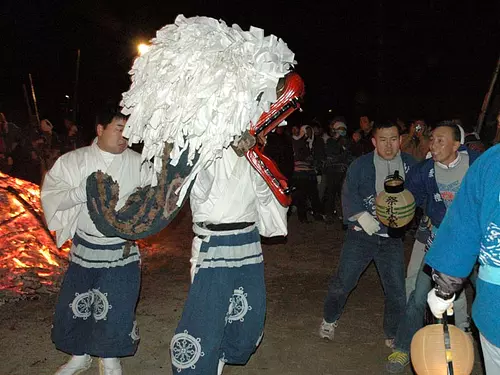
開催日:2026年2月7日(土)
直線距離:4.7km
東大淀の御頭神事【県指定無形民俗文化財】
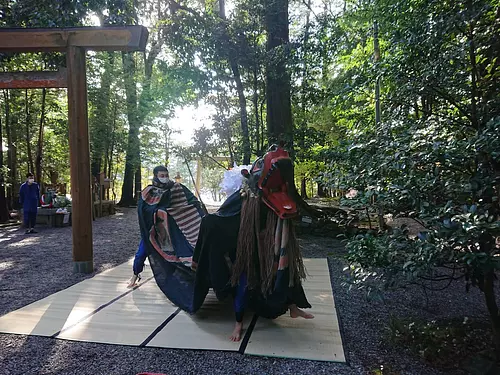
開催日:2026年2月14日(土)、2026年2月15日(日)
直線距離:5.1km
【田丸神社】獅子舞神事
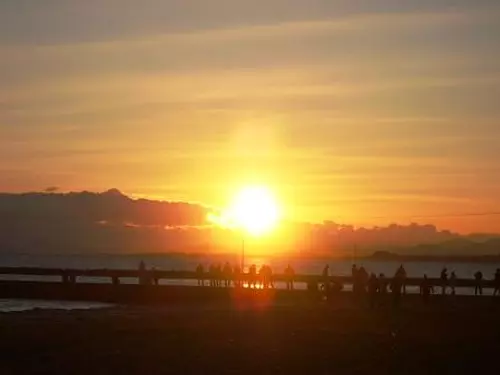
開催日:2026年1月1日(木・祝)※雨天中止
直線距離:5.1km
【大淀海岸】 2026初日の出を迎える会
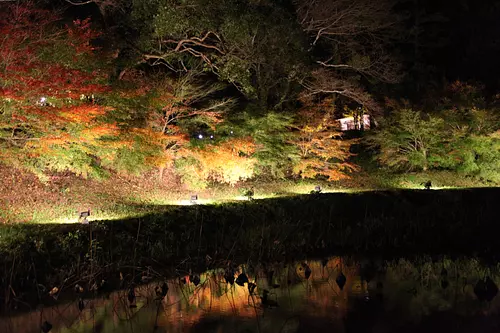
開催日:2025年12月1(月)~2026年1月31日(土)
直線距離:5.4km
田丸城跡ライトアップ
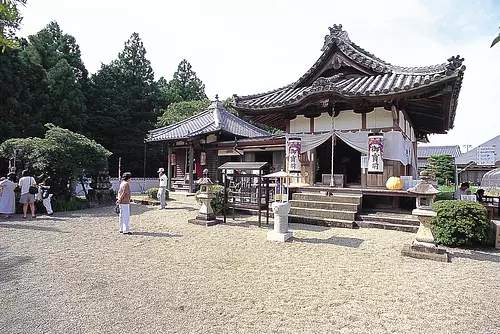
開催日:2026年2月18日(水)
直線距離:6.7km
【富向山田宮寺】 田宮寺初観音
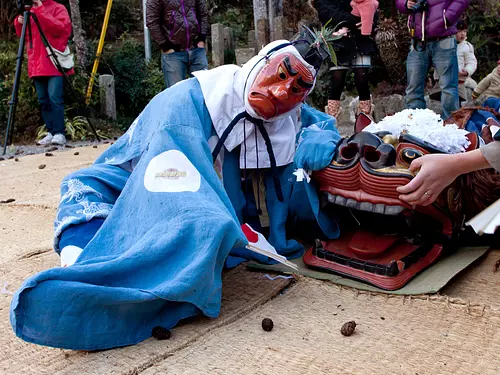
開催日:1月最終日曜
直線距離:7.8km
山神獅子舞神事
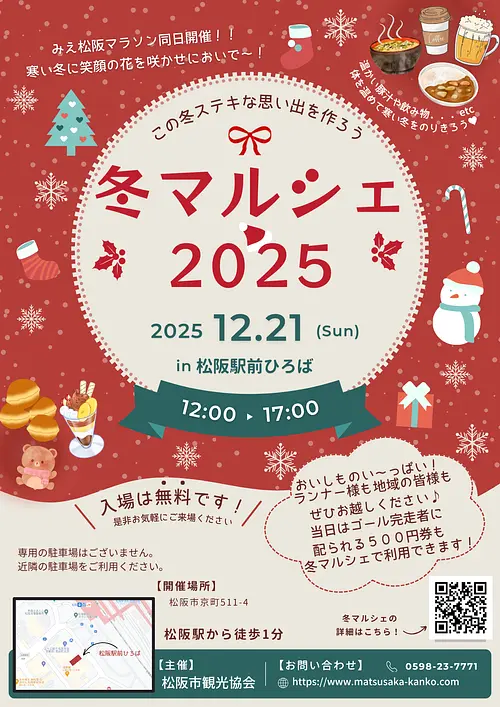
開催日:2025年12月21日(日)〜2025年12月21日(...
直線距離:8.4km
冬マルシェ2025
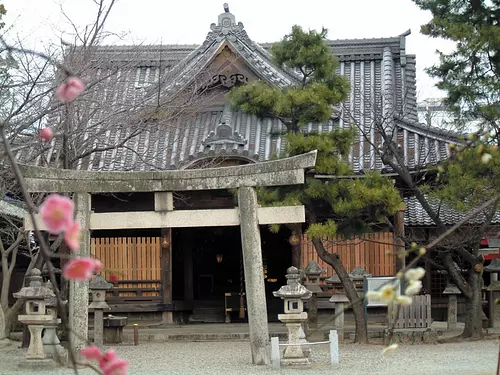
開催日:2025年12月31日(水)~2026年1月3日(土)
直線距離:8.4km
八雲神社初詣
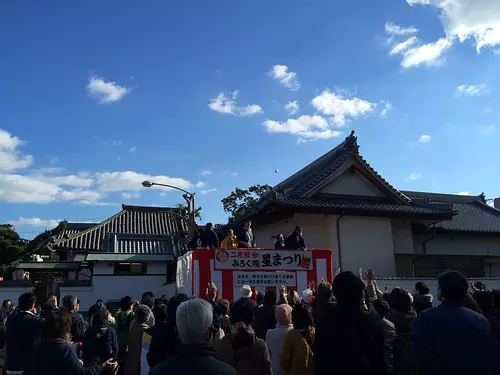
開催日:令和8年の節分は、2月3日(火)です。(毎年2月3日)
直線距離:8.4km
みろく院 星まつり
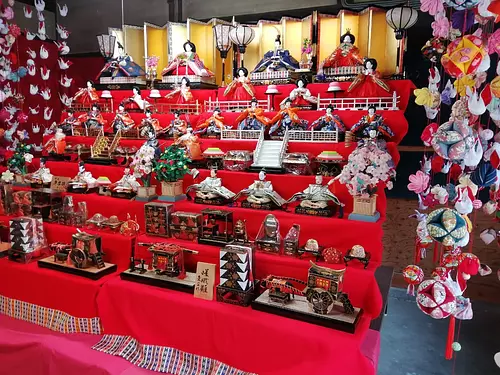
開催日:2026年02月21日(土)〜2026年03月03日(火)
直線距離:8.5km
第20回 松阪まちなかお雛さま祭り
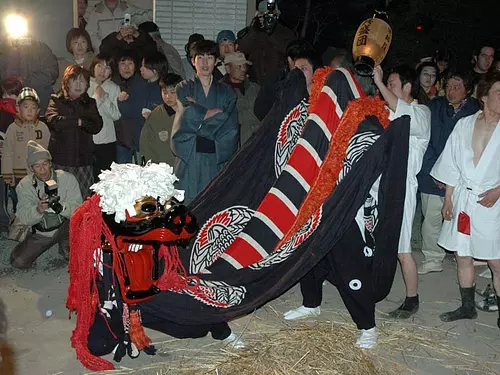
開催日:2026年2月14日(土)
直線距離:8.6km
高向の御頭神事【国指定重要無形民俗文化財】
近くでできる遊び・体験
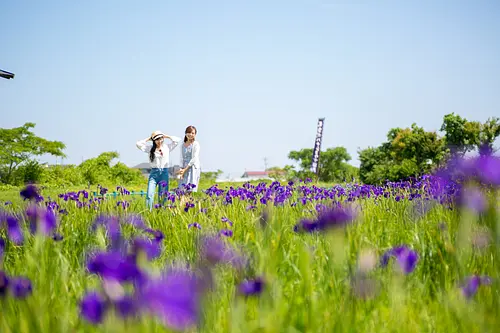.jpg)
直線距離:33m
初夏限定!花の都「斎宮」を巡るノハナショウブ満喫ツアー〈期間限定スイーツ&限定御朱印付き〉
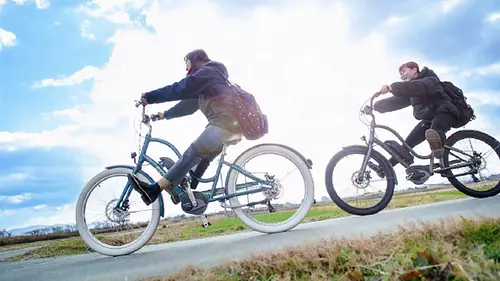
直線距離:73m
明和町レンタサイクル
直線距離:316m
日本の麻でつくる しめ縄飾りづくり
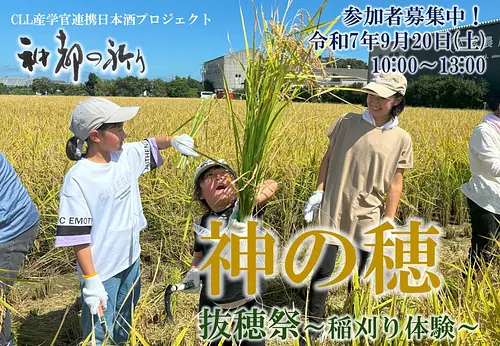
直線距離:3.6km
日本酒「神都の祈り」抜穂祭 〜酒米稲刈り体験〜

直線距離:5.0km
江戸時代に生まれたヴィーガンレザー「伊勢擬革紙」を使った御朱印帳づくり体験
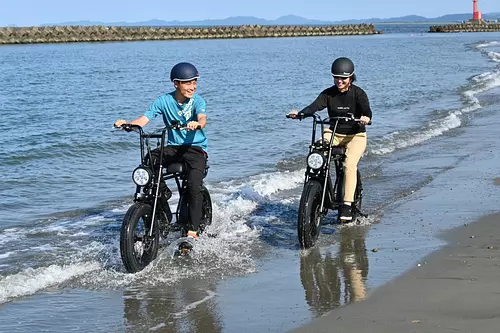
直線距離:5.1km
伊勢・斎宮「大淀ふぁっとバイクビーチクルーズ」

直線距離:5.8km
歴史漂う日本家屋「玄甲舎」でのご利益ヨガ体験と開運ランチ

直線距離:6.4km
紙切り名人に教わる開運を招く「紙切り昆虫」づくり体験
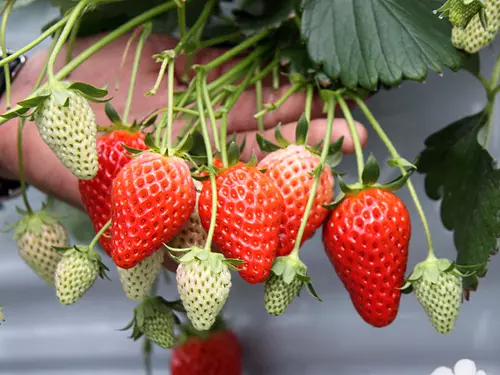
直線距離:6.8km
玉城ふれあい農園 いちご狩り
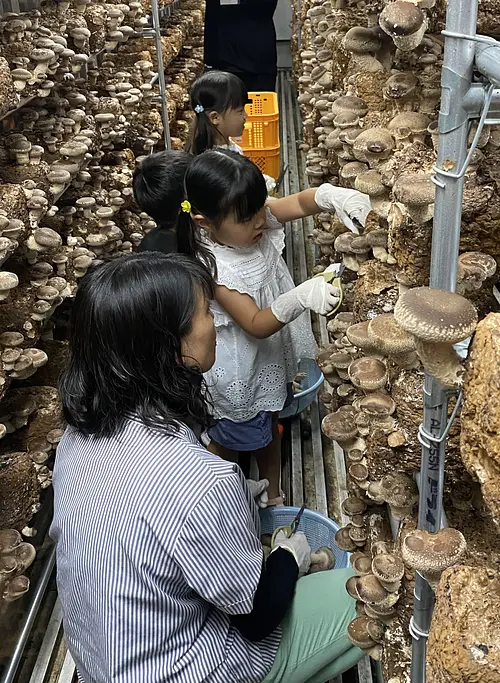
直線距離:8.3km
きのこ狩り
直線距離:8.5km
松阪霊地 五福神をめぐるウォーキングツアー
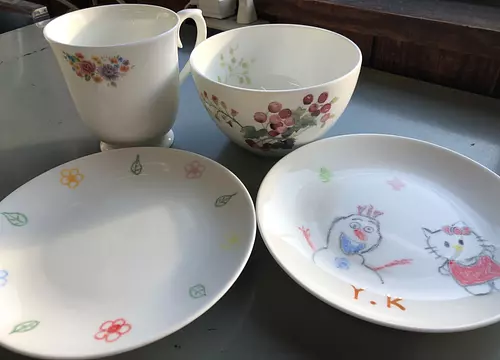
直線距離:9.8km
ごかつら池ふるさと村 お皿の絵付け体験



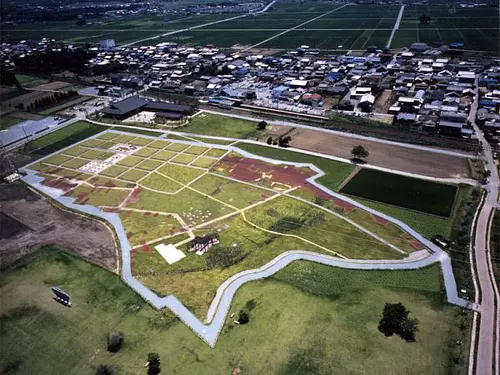
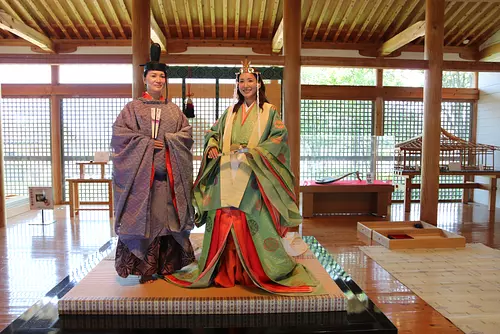
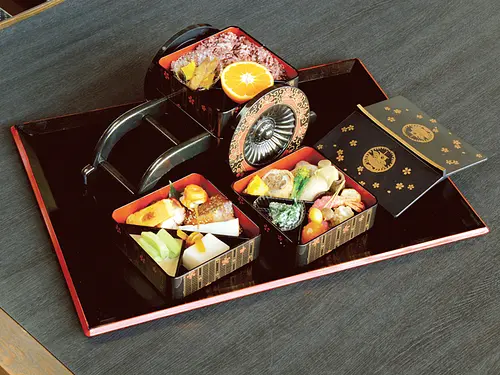
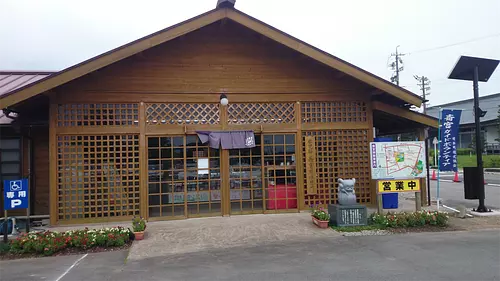
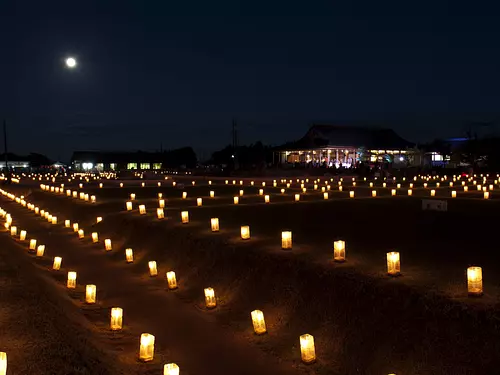
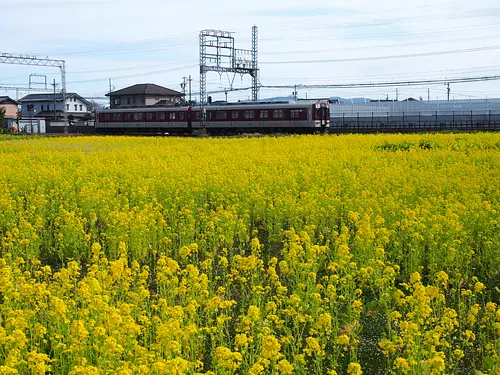
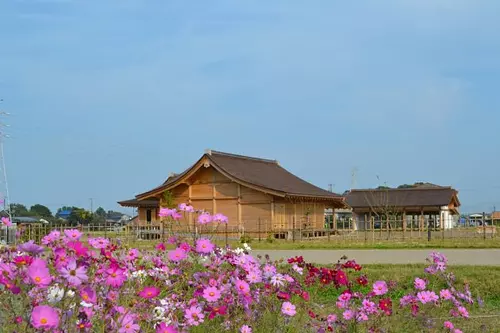
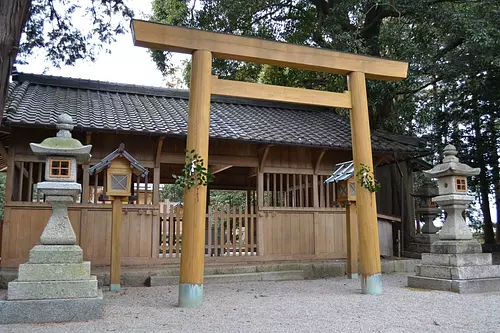
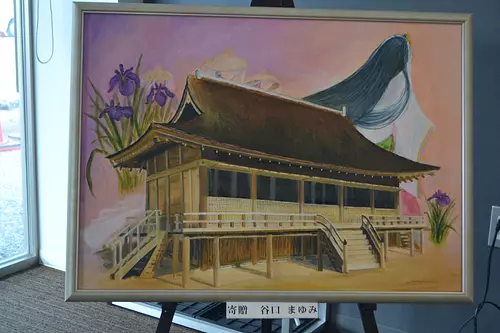
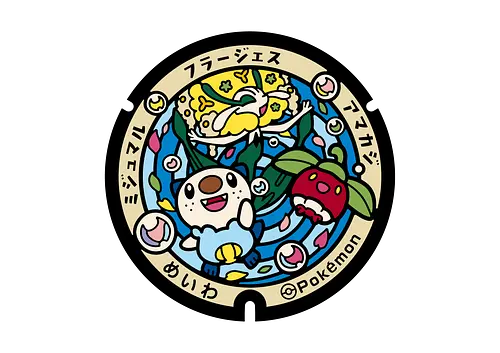
.png)
